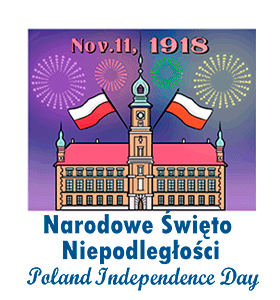Independence Day
Independence Day Quick Facts in the EU
| AKA Name | Narodowe Święto Niepodległości |
|---|---|
| HashtagsCompiled on | #IndependenceDay |
| Related Hashtags | #Poland |
| 2025 Date | 11 November 2025 |
| 2026 Date | 11 November 2026 |
2025 Holidays & Dates - EU
| EU Country Common Holidays | ||
| EU Country National Holidays | ||
| Jewish Holidays |
› | ||
